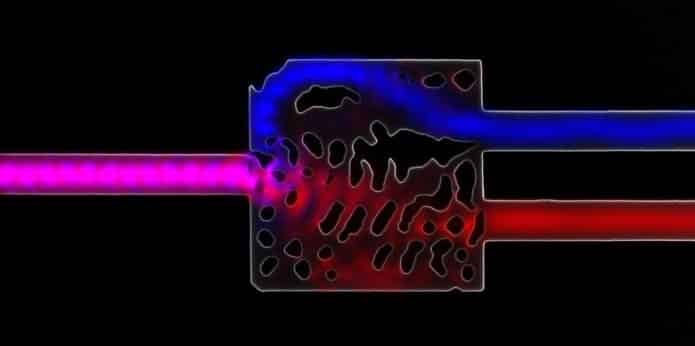Table Of Contents
Stanford University create super fast computer using data chips that transport data on light instead of electricity
Light would be the mode of transportation to efficiently pass data between computer chips rather than electricity in the awesome Super-efficient light based computers
Presently, the data between the computer chips is transported using electricity which results in lots of energy consumption as well as the speed at which this transportation occurs is quite slow. A team of engineers at the Stanford University, have found an awesome solution to this problem with the invention of Super-efficient Light based computers which uses light as the mode of transportation rather than electricity and thus the data can travel as much faster speed utilizing very little energy.
Researchers have found a method to send data in the form of photons through the optical fibers and this very technology is being used in Internet, wherein we have witnessed enormous speed at which the data is being sent. However, the major issue with this technology is that the data embedded in photon needs to be converted back to electrons and shoved through wires and ultimately onto the device / computer. Though proton transportation is much faster, once the data hits the device the process of conversion of photon to electrons is a much slower process and also it uses up a lot of energy which makes the device very hot.
During a press release, Jelena Vuckovic, professor of electrical engineering, from the Stanford University said: “Several years ago, my colleague David Miller carefully analyzed power consumption in computers, and the results were striking”. She added: “Up to 80 percent of the microprocessor power is consumed by sending data over the wires – so called interconnects”.
Engineers have been struggling to find an efficient method to create computer chips that can process light and have got very close to achieve this by transmitting light across thousands of different connections known as Interconnects, between them. Theoretically, it is possible to beam light between chips using silicon structures which bend light to the desired point. To make this technology successful engineers would have to a create an entire new silicon structure in such a way that it will replace every single wire within a computer and building such silicon structures is very difficult.
The team of electrical engineers at the Stanford University comprising of Alexander Piggott who is a graduate student; Vuckovic et al have invented a technique that can bring about a revolution in the world of computing. The lead author of this research team, Piggott has published an article in Nature Photonics to explain a process which utilizes light to carry data in the computer chips instead of electricity.
The team of engineers at the Stanford University have developed an inverse design algorithm based on which they can build the silicon structures which is required to perform the much needed task. Using this algorithm the team has already designed a working optical circuit and have been successful in making several such copies in their laboratories.
The entire research has been published in Nature Photonics last month. The article specifies that the team of engineers have successfully demonstrated that the devices can work perfectly though there are some tiny imperfections in the silicon structures.
Piggott said: “Our manufacturing processes are not nearly as precise as those at commercial fabrication plants. The fact that we could build devices this robust on our equipment tells us that this technology will be easy to mass-produce at state-of-the-art facilities”.
Let us take a probe into the building of a Silicon Interconnector :
Light passes through silicon, however in the process it gets bent. While designing the Silicon Interconnector, very thin slices of silicon are layered in such a manner that almost more than 20 slices can be accommodated adjacent to each other in a small space which would be not more than the diameter of human hair. Precise segments of silicon slices are then paired as per the inverse design algorithmic method. Thus the silicon interconnector was build and now the engineers were able to create switches or conduits that regulates the flow of photons in a manner that is similar to the present wires which controls the flow of electrons.
Vuckovic said: “Our structures look like Swiss cheese but they work better than anything we’ve seen before”.
The Press release further mentioned that “with the innovative creation of an algorithmic method, the team of engineers have actually automated the development of complex Swiss cheese silicon structures and thus have actually set the stage for the next generation of even faster and far more energy-efficient computers that use light rather than electricity for internal data transport”.
The team of engineers further state that by using the awesome algorithm design researchers can also get solution for other communication issues. They further specify that researchers just need to put up the required result and the algorithm will be ready with a plan for that issue.
Are you excited to hear about these super efficient computers and the inverse algorithmic designs? Do give us your inputs about this innovative technology in the below comments.

